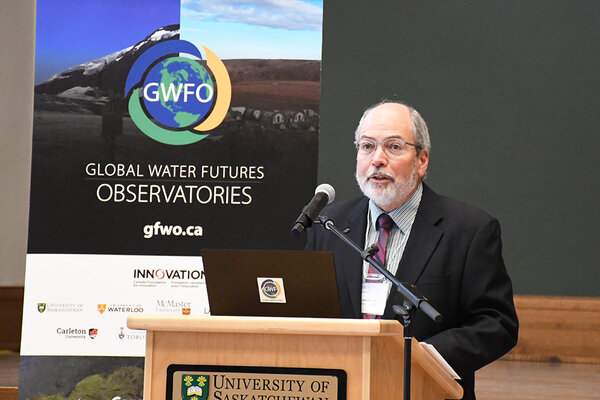
John Pomeroy to lead new research facility in Rockies
John Pomeroy, Canada Research Chair in water resources and climate change, is director of new research lab
U of S opens water research facility in the Rocky Mountains to study flooding and drought risk
CANMORE, AB – The University of Saskatchewan (U of S) has expanded its research facilities studying the impacts of a changing climate on water resources with the opening of a new laboratory in Canmore, Alberta. John Pomeroy, Canada Research Chair in water resources and climate change and a professor in the Department of Geography and Planning, has been appointed director of the new Coldwater Laboratory.
“The retreating glaciers in the Rocky Mountains are among the best indicators of climate change,” said Pomeroy. “By having our research centre located in the ‘heart of the action’, we can understand the impact of changes in climate on water, glaciers and snow in areas that are the water source for many downstream communities.”
The Coldwater Laboratory will improve the flood and drought resiliency of communities such as Canmore and Calgary by developing tools that provide better disaster monitoring, predict future water availability and help stakeholders with water resource decision making.
“Our research could provide us with more advanced warning of events like the 2013 floods that devastated the region and led to widespread flooding in southern Alberta,” added Pomeroy.
Over 20 people will conduct research at the lab, including students, postdoctoral fellows and research assistants. The Coldwater Laboratory is part of the U of S-led international Global Water Futures program which aims to advance Canada’s resiliency to events such as flooding and drought by improving the way climate change is diagnosed and predicted, and by providing adaptation and risk management tools.
“Internationally, mountain regions provide freshwater for half the world’s population,” said Pomeroy. “The predictive models and tools we are developing here in Canmore will be used by our international research partners to predict water availability in the Andes, the Himalayans and other important regions around the world.”
The Global Water Futures program involves a budget of over $143 million and includes a research network that spans 18 Canadian universities, 19 federal and provincial agencies, seven Indigenous communities and governments, 39 industrial collaborators, 15 non-governmental agencies and 45 international research institutes.


